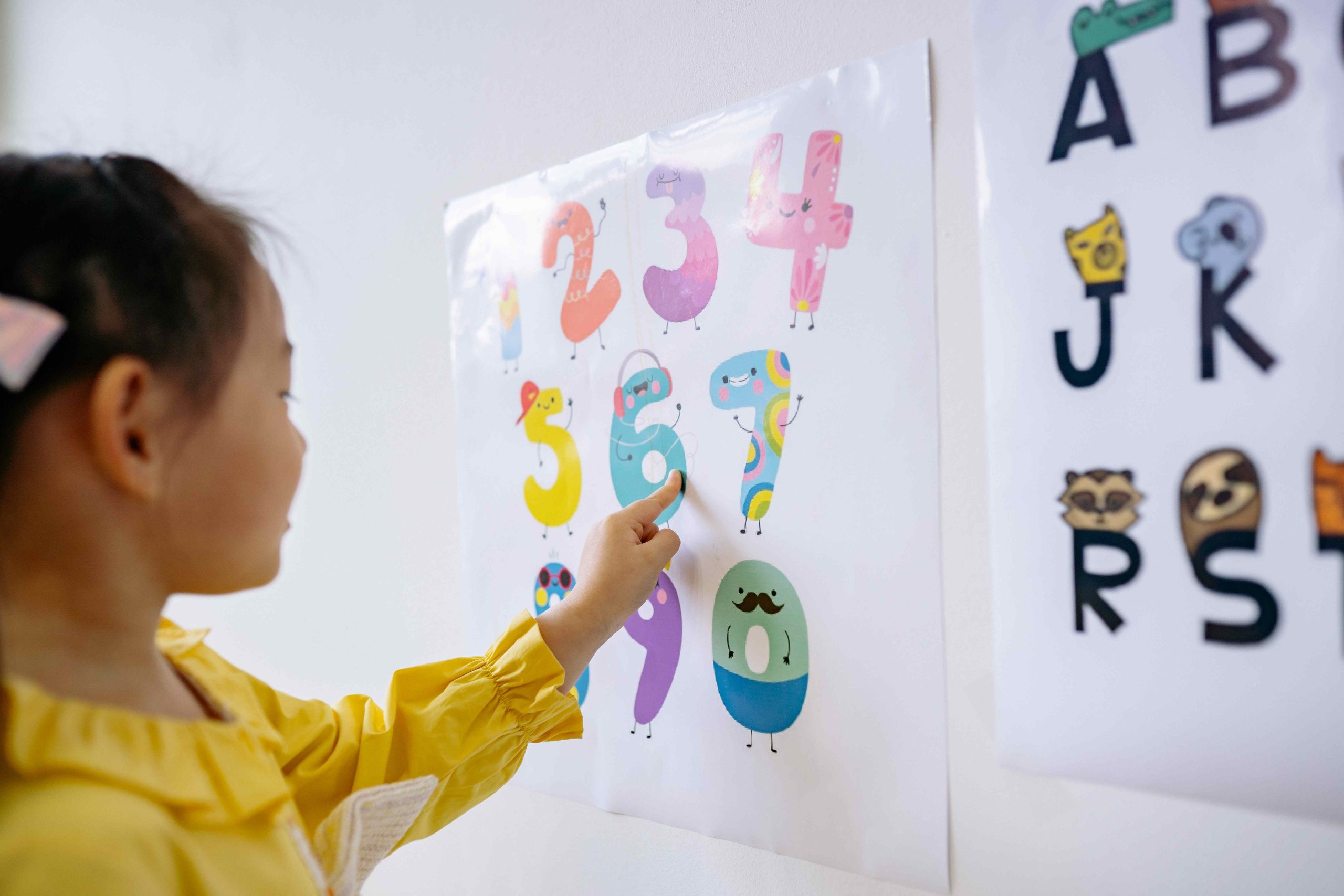
Number Concepts for Preschoolers: Understanding the Basics
Kids in preschool are at a crucial period of development when they continuously learn and discover their surroundings. Understanding and working with numbers, or numeracy, is a vital area of concentration at this time. In this piece, we’ll discuss the basics of math for preschoolers and how parents and teachers can support their development of this critical skill.
Recognizing and Counting Numbers
Counting is often a child’s first exposure to numbers. The ability to count up and down and in numerical sequence is crucial. By incorporating counting into routine activities like counting fingers, toes, or toys, parents and teachers can make math enjoyable for children. Another essential aspect of numeracy is number recognition. Preschoolers should be able to recognize numerals up to 20.
Recognizing Size and Comparisons
Understanding mathematics involves a solid grasp of quantity. Preschoolers should understand terms like “more” and “less” and be able to make basic quantity comparisons. They can also learn the skill of counting objects and matching them to corresponding numbers.
Overview of Basic Operations
Addition and subtraction can be introduced to preschoolers in a fun and engaging manner. This may involve using visual aids like a number line, counting objects, or using fingers. Games and activities, such as treasure hunts or using blocks for addition and subtraction, can also help reinforce these fundamental concepts.
Patterns and Shapes
Shapes and patterns, fundamental to mathematical thinking, can also be taught to preschoolers. By recognizing shapes and patterns, preschoolers can improve their visual-spatial awareness and problem-solving skills. Activities like building with blocks, drawing shapes, or identifying shapes in everyday objects can help children learn about shapes. Similarly, introducing patterns using objects like blocks or beads can help reinforce this concept.
Quantity and Time
Preschoolers can also learn about other important concepts like measurement and time. By comparing the sizes of different objects or using measuring spoons and cups during cooking activities, they can learn about measurement. Understanding the concept of time can be facilitated through visual aids like timers and incorporating daily routines.
Subitizing
Subitizing, or quickly determining the number of items in a collection without counting, is a crucial skill for toddlers to develop. Activities like stacking toys in groups and asking children to count them quickly or using flashcards with pictures can help develop this ability.
Counting On
Counting on, starting with a number and counting onward, is a basic arithmetic skill that can be cultivated through various activities such as counting items or steps.
Numeral Sense
Number sense, the understanding of numbers and their relationships, is essential for toddlers to grasp. Visual tools like number lines and ten frames can help children understand these relationships, along with real-life examples like counting apples in a basket or seats in a room.
Place Value
Place value, understanding that a digit’s value depends on its position in a number, can be introduced through activities like counting by tens and ones and using manipulatives like base-ten blocks.
Subtraction and Addition
Preschoolers should begin to master basic math skills like addition and subtraction. These skills can be developed through manipulative use and counting objects, with real-world examples helping to reinforce understanding.
Measurement
Preschoolers should grasp the concept of measurement as it is used frequently in everyday life. Activities like measuring the length of objects using non-standard units or comparing weights can help children learn about measurement.
Geometry
The study of shapes and their properties, geometry, can be introduced to preschoolers through recognizing and describing simple shapes and exploring symmetry using blocks or other materials.
Teaching Methods for Preschoolers
After discussing the importance of teaching math basics and various approaches, let’s explore some strategies educators and parents can use to enhance the learning process.
Be Engaging and Interactive
Making learning fun and engaging is essential for fostering a love of numbers in preschoolers. Incorporating activities like games, songs, and rhymes can make learning more enjoyable and interesting.
Use Hands-On Learning Tools
Preschoolers learn best through hands-on activities. Providing tangible objects like blocks or counting bears can aid in their understanding of mathematical concepts.
Practice Regularly
Consistency is key when teaching preschoolers math basics. Providing regular opportunities to practice counting and other skills in everyday activities helps reinforce learning.
Provide Real-Life Examples
Connecting mathematical concepts to real-life situations helps preschoolers better understand their relevance. Examples from everyday life, such as counting grocery items, help reinforce the value of numbers.
Use Visual Aids
Visual aids like charts and drawings help preschoolers visualize mathematical concepts, making them easier to understand.
Encourage Progress
Celebrating preschoolers’ achievements in math encourages them to continue learning and builds their confidence. Positive reinforcement strategies like praise and rewards can motivate children to excel in math.
In conclusion, teaching preschoolers the basics of math is crucial for their early education. By providing a solid foundation in numbers, preschoolers develop skills that benefit them throughout their lives. Using a variety of teaching styles and methodologies, educators and parents can make learning math enjoyable and effective for preschoolers, setting them up for success in future math learning.
It’s important to adapt teaching strategies to each child’s specific needs and interests while also ensuring that learning is enjoyable and engaging. With the right approach, preschoolers can develop a love for math that will stay with them as they grow.


